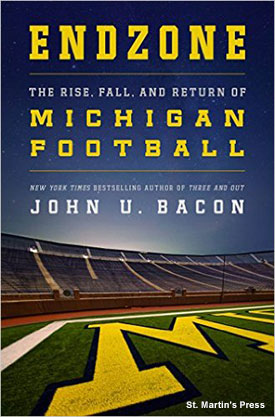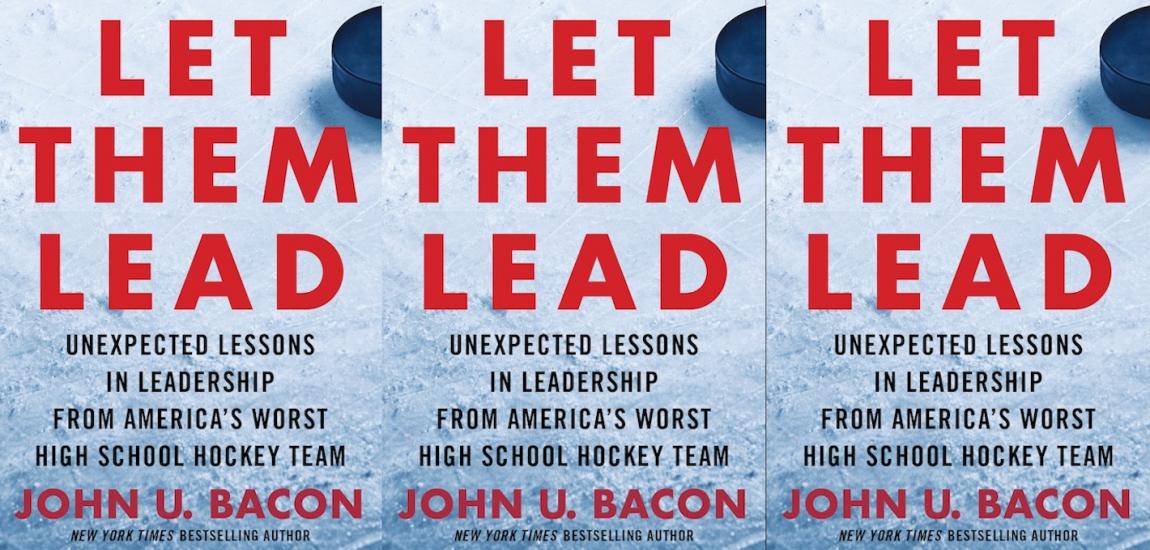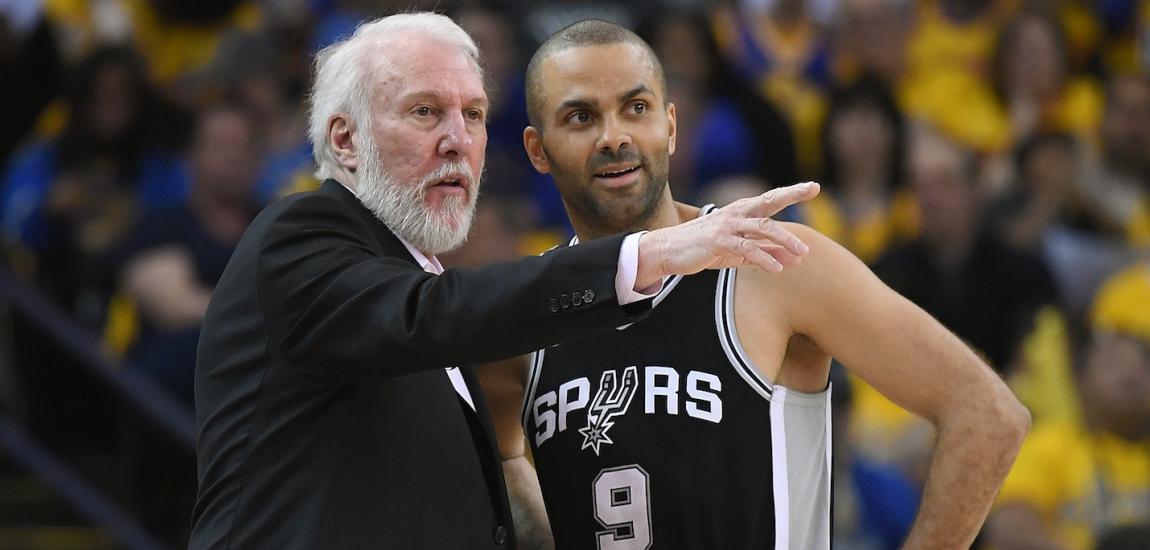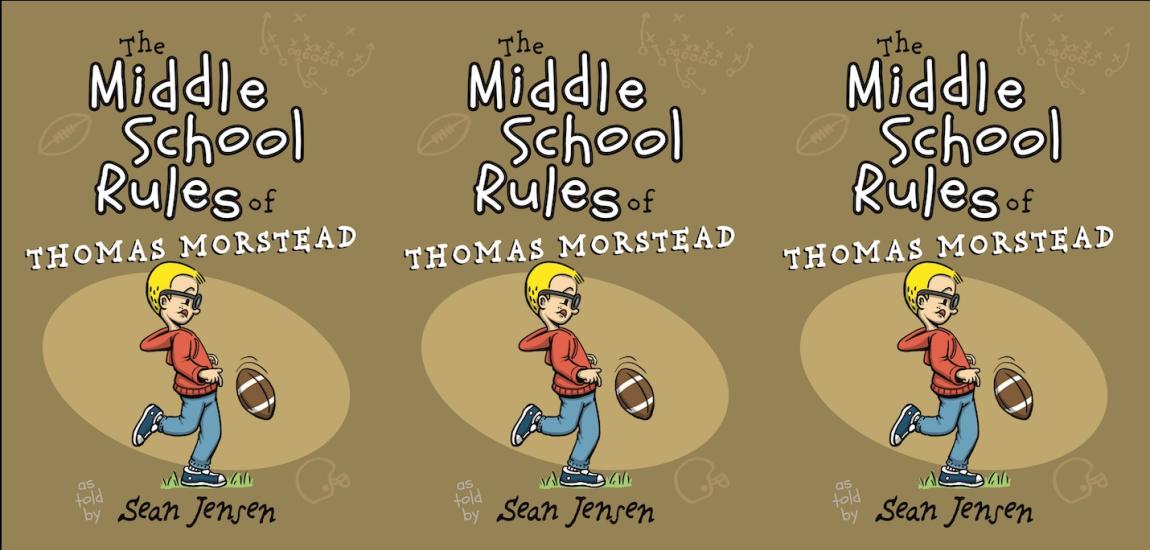New York Times bestselling author John U. Bacon tackles the story of how Michigan football collapsed into almost unrecognizable mediocrity during the past decade. Published by St. Martin's Press, "EndZone: The Rise, Fall, and Return of Michigan Football" will be released Sept. 1. Here is an excerpt:
The jet cut through the clouds and eased onto the airstrip at Detroit Metro Airport, just a few miles from where Charles Lindbergh once tested World War II bombers.
This plane's mission wasn't nearly so serious, of course. But the joy it gave to the people below seemed to exceed just about everything since V-J Day.
The jet's cargo happened to be one James Joseph Harbaugh. He's just a football coach, but that day he had done what so many experts said he would never do, right up until the minute he did it: leave the bright lights, big cities, and even bigger money of the NFL for the cornfields and college towns of the Big Ten. This decision -- so mystifying to NFL reporters -- explains why the masses might have been forgiven if they mistook Harbaugh for their savior.
But why did Harbaugh make that decision -- and how did he even get the chance?
Most reporters kept saying there was no way Jim Harbaugh would ever bypass the NFL for Ann Arbor. It turns out their doubts were well founded -- but not for the reasons they offered. The odds against Harbaugh's return really were astronomical -- but when a stunning series of departmental mistakes inspired a grassroots effort for reform, bold leaders stepped in to remove each obstacle, one by one. That it all happened just in time for Michigan to offer Harbaugh the chance to come home completed a chain of events that would have been impossible for anyone to predict even six months earlier.
That chain actually reaches back more than a century.
The University of Michigan was founded in 1817, and a band of students formed the school's first football team in 1879. The two have been inextricably linked ever since.
The university boasts world-renowned professors, researchers, and alumni -- 500,000 strong, more
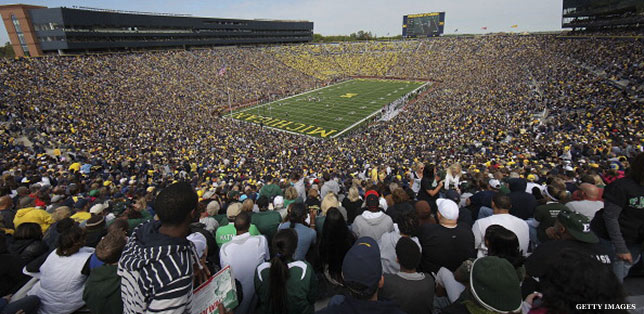
than any university in the world -- with an endowment fast approaching $10 billion, and a QS Ranking as the nation's top public university.
That university also claims the iconic banner, the band, and the Big House -- the biggest stadium in North America, not to mention "The Victors," the winged helmet, and the most wins in college football.
Arguably the nation's greatest public university and its greatest college football program can both be found on the same campus in Ann Arbor, Michigan.
Michigan students, lettermen, alumni, faculty, and fans take a great deal of pride in that unique combination -- and they watch the source of their pride very closely. They believe it's not just Michigan's victories that matter -- on and off the field -- but the values behind them that are so important, values that place a premium on community, achievement, and integrity.
When they feel those values are threatened, they rise to defend them.
When dawn broke on Friday, November 17, 2006, the Michigan Wolverines stood atop the college football world.
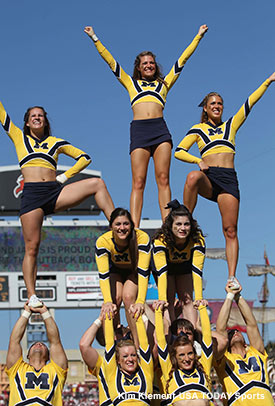
They had notched the most wins in the sport's history (871), the highest winning percentage (.735), the most conference titles (43) in the sport's oldest, most storied league, the biggest stadium (101,501), the largest crowds -- exceeding 100,000 for 251 straight games, going back to 1975 -- the biggest revenues and, many believed, the most respect.
That morning, the Wolverines stood at 11–0, and were ranked second in the nation. A win over top-ranked Ohio State the next day, in the first "Game of the Century," would give them a shot at a twelfth national title, which would provide a fine springboard for the complete renovation of the stadium, ensuring the Big House would remain the nation's biggest and most profitable, for years to come.
Retired coach Bo Schembechler, the program's patriarch, gave the team a vintage speech Thursday night. But he did not spend much time on that weekend's game, or the stakes involved. Instead, he talked to them about what it means to be a Michigan Man, and how becoming one was the ultimate goal of everyone in that room.
In Ann Arbor, life couldn't get much better.
The next morning, Friday, November 17, 2006, Bo Schembechler died from heart failure. For Michigan fans, the bad news has lasted almost a decade.
The next day, Michigan lost a nail-biter, 42–39, to Ohio State -- then dropped the next three straight, including the 2007 season opener against Appalachian State, still considered the greatest upset in the history of college football.
When head coach Lloyd Carr retired after that season, Michigan hired Rich Rodriguez, whose troubled three-year run produced a 15–22 record and a fractured fan base. In 2011, little-known Brady Hoke replaced Rodriguez and enjoyed a honeymoon season when the Wolverines beat the Buckeyes for the first time in eight years, and won a BCS bowl for the first time in twelve, to finish 11–2. But the next three seasons, the program slid steadily downhill, culminating in a 5–7 record in 2014, and Hoke's dismissal.
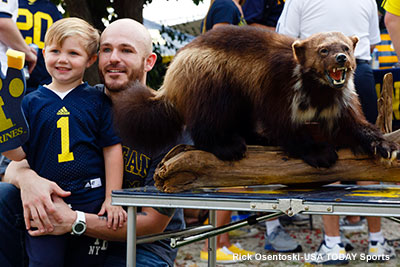
Since the day Schembechler died eight years earlier to Hoke's firing on December 2, 2014, mighty Michigan had gone 55–48 overall, and 24–33 in the Big Ten -- not the kind of numbers that had made Michigan the envy of its peers. Once the pride of a powerful conference, the Wolverines had become also-rans in an often overlooked league.
When the football program collapsed into almost unrecognizable mediocrity, its fall pulled the university itself into conflict, controversy, and crisis.
What went so wrong, so fast?
The losses, fans could see. But most of the problems that led to those losses were invisible to the public -- as were their solutions, and the people who conceived them.
On January 5, 2010, University of Michigan's president, Mary Sue Coleman, announced she had hired former Michigan football player, university Regent, and Domino's Pizza CEO Dave Brandon, ahead of three experienced athletic directors with strong Michigan ties, to become Michigan's eleventh athletic director. She introduced him as the "ideal candidate."
Brandon put his guiding principle, "If it ain't broke, break it!" to work as soon as he took office, transforming Michigan's rock-solid 135-year-old operation into a dazzling money machine, pushing revenues roughly 50 percent higher in just a few years, up to $150 million.
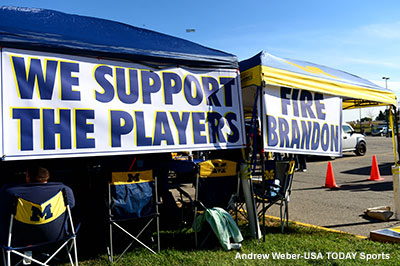
But Brandon also replaced loyal, experienced employees who had built great relationships with the students, the lettermen, the fans, and the media, with outsiders who quickly alienated all those groups. Just four years into Brandon's tenure, the money started drying up, the fans stopped filling the Big House, and just about everyone was bailing on Brandon's vision. In October of 2014, the students held a campus rally outside the home of recently hired President Mark Schlissel to demand he fire Dave Brandon.
It was not simply the 2014 team's 2–3 record to that point that had them upset, or they would have been asking for Hoke to be fired, not Brandon. It went deeper than that: They no longer had confidence the athletic director represented the values of the university they loved.
In different ways and at different times, the many constituents of Michigan football reached the same conclusion: This is not Michigan.
Something had to give. But could anyone make the needed changes fast enough to prevent a truly disastrous 2015 season, on and off the field, and avoid missing out on Michigan's slim chance to hire Jim Harbaugh?
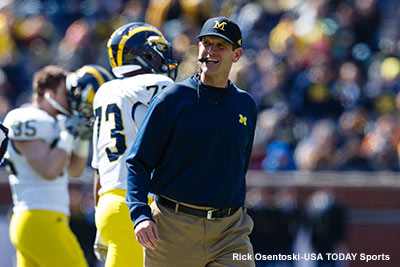
Why Michigan pined for Jim Harbaugh is simple: He had been raised in the Michigan tradition, he'd embodied those values while quarterbacking the Wolverines to a Big Ten title, and he had since become the hottest coach in the country, leading the San Francisco 49ers to three straight NFC title games.
But why Harbaugh wanted to return to his beleaguered alma mater was harder to see -- and most observers dismissed even the possibility that Harbaugh would consider leaving the NFL to captain Michigan's sinking ship. If Harbaugh wasn't going to stay in San Francisco, surely he would accept the riches of another major-market NFL team looking to land the nation's most wanted coach.
But if you knew Jim Harbaugh, and the hold Michigan had always had on him, the idea of turning down the big time for small town Ann Arbor wasn't so far-fetched. Countless people, both inside the university and out, worked to fix what had been broken, to make that marriage irresistible to both parties.
If Harbaugh had gone to New York, Chicago, or Oakland, he'd still have been a great coach -- and he probably would have been fired one day. But his boosters made it clear that if he returned to Michigan, he'd be greeted as a savior.
For all college football's commercial trappings -- including NFL-style coaching salaries -- its fans still believe their favorite sport is less a business than a religion. This is why Penn State, Ohio State, and Michigan draw almost twice as many fans as the NFL teams do in their states. That religious fervor is what draws college football fans to the game, year after year.
But the question remained: Was that spirit strong enough to pull the Michigan family together and call its native son back home when the chance arose -- or would they miss their opportunity and suffer through another cycle of mediocre Michigan football, one that would test the patience of even the most ardent Michigan fan?
This is the story of how Michigan fixed itself.
-- Excerpted by permission from EndZone: The Rise, Fall, and Return of Michigan Football by John U. Bacon. Copyright (c) 2015. Published by St. Martin's Press. All rights reserved. No part of this excerpt may be reproduced or reprinted without permission in writing from the publisher. Available for purchase on Amazon, Barnes & Noble and iTunes. Follow John U. Bacon on Twitter @johnubacon.

